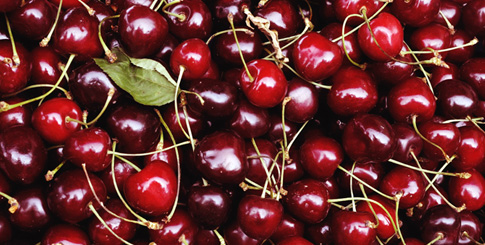Precision Packing
Cherry packing has become progressively cutting edge. “For the most part, our industry has transitioned into optical sorting technology,” confirms Michael. The shift to the high-tech equipment has a dual benefit, as it “has allowed us to manage larger crops while maintaining quality and efficiency.”
“There are many changes on the packing side with everyone going to these high-optic machines that do a phenomenal job of sorting,” agrees Jameson. With a sharp eye for size, color, and defects the machines are “very uniform as far as the final pack,” he continues, “so most packers in California are implementing some sort of optics into their facilities.”
Rainier Fruit is enjoying its second season with what DeHerrerra describes as an all-new “massive packing line,” and says everyone is “very happy with the flexibility and speed it provides both for us and our customers.”
Morada Produce, too, is increasing capacity, adding another 40 lanes by 2019 for a total of 100 lanes, all with optic sorting.
International Markets
Just as demand for cherries has increased domestically, international customers are clamoring for more of the bite-size orbs as well. Morada Produce exports nearly 40 percent of its supply, with the remaining 60 percent sold in the United States.
Shipping to worldwide destinations, however, can present challenges. Markets each have their own tolerances for chemical levels, and Morada maintains full-time staff to monitor and keep track of every country’s requirements.
Although Japan used to be the largest importer of California cherries, Jameson says quantities have “decreased dramatically over the past 10 years. Fortunately, he sees South Korea as a promising market, as shipments continue to climb each year.
Reiman at River City still ships a great deal to Japan, but also sees South Korea becoming a bigger player, highlighting the two countries as Asia’s top cherry importers. Marboe has seen “many new markets open up and continue to grow,” citing Korea, Australia, and China.
Hurdles: Pests, Labor
Although it has not been an issue lately, the spotted-wing drosophila hovers in the back of California growers’ minds. The pest is a particular headache for organic growers. “Once there is any infestation and we have to spray, we have to take those trees out of the organic program,” explains Jameson. The result not only limits supply but “makes growers leery to go into organics because of the three-year certification process.”
The Pacific Northwest has fared a little better; Michael says, “pests and diseases are rarely an issue due to our climate, topography, and hard winters.”



